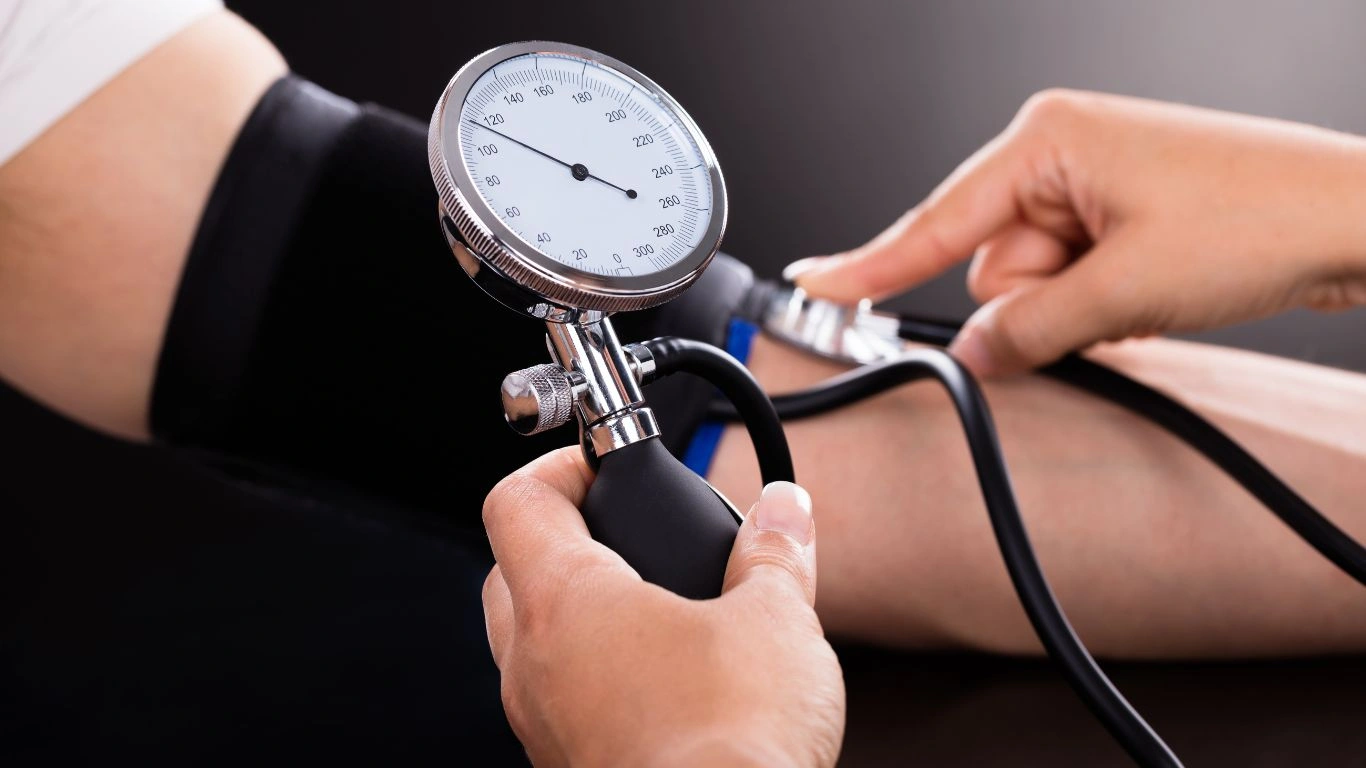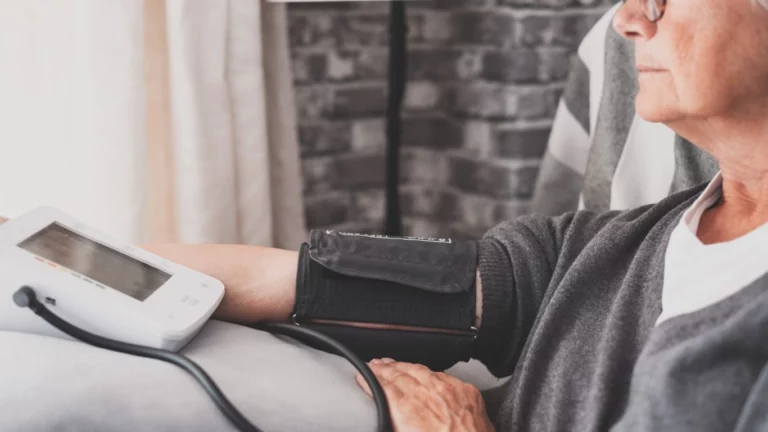How Deep Breathing Improves Hypertension Symptoms and Reduces Stress
As a hypertension expert, I’ve seen firsthand how simple lifestyle changes can make a world of difference in managing high blood pressure. One method that continually stands out, and often surprises my patients, is the power of deep breathing. You might not think of something as simple as taking a deep breath to make a huge impact on your hypertension symptoms, but trust me – it does. If you’re struggling with high blood pressure, or if you just want to take a proactive approach to improving your overall health, deep breathing exercises could be a game changer for you.
How Deep Breathing Improves Hypertension Symptoms

When it comes to managing hypertension, we often think of things like medication, dietary changes, or regular exercise. But one area that’s frequently overlooked is the power of breathing. I’ve worked with many patients who initially felt skeptical about the idea that something as basic as breathing could influence their blood pressure. However, as they practiced and incorporated deep breathing into their daily routines, the results were undeniable. It’s one of the easiest and most effective natural remedies for hypertension, and it’s something you can start today without the need for special equipment or professional training.
What Happens to Your Body During Deep Breathing?
To understand how deep breathing works to improve hypertension symptoms, let’s break it down. When you practice deep breathing, your body goes through several physiological changes that help reduce stress and lower your blood pressure. Here’s what happens:
- Activation of the Parasympathetic Nervous System: Deep breathing activates your parasympathetic nervous system, which is responsible for calming your body down. This system is often referred to as the “rest and digest” system, and it helps counteract the effects of the “fight or flight” response triggered by stress. The deeper your breath, the more your body can relax.
- Reduction in Heart Rate: As you take deeper breaths, your heart rate naturally slows down. This is one of the main reasons why deep breathing helps lower blood pressure. A slower heart rate leads to reduced stress on the heart, which over time can contribute to lower blood pressure levels.
- Improved Oxygen Flow: Deep breathing increases the oxygen intake in your body, improving the efficiency of your lungs and boosting circulation. This ensures that your heart doesn’t have to work as hard to pump blood, which in turn helps to lower blood pressure.
Now, let’s dive into why this is so important for those of us dealing with hypertension. Stress is one of the most common triggers of high blood pressure. If you’re constantly feeling anxious or overwhelmed, it can lead to long-term hypertension. But deep breathing provides a natural way to lower stress levels, helping to alleviate this trigger. It’s a simple practice, but it packs a punch when it comes to your health.
The Science Behind Deep Breathing for Hypertension

Over the years, numerous studies have explored the link between deep breathing exercises and improved blood pressure control. Research consistently shows that deep breathing exercises can reduce both systolic and diastolic blood pressure. One study published in the Journal of Hypertension found that participants who practiced deep breathing for just 10 minutes a day saw a significant reduction in their blood pressure readings.
But it’s not just about the short-term effects. Over time, deep breathing can help lower your overall blood pressure, potentially reducing the need for medication in some cases. I’ve personally seen patients reduce their reliance on medications simply by incorporating deep breathing techniques into their daily routines. Of course, it’s always important to work with your healthcare provider to determine the best treatment plan for you.
How to Practice Deep Breathing for Hypertension Relief
Okay, now that you know why deep breathing is so effective, let’s talk about how to do it. The good news is that deep breathing doesn’t require any special equipment or expertise. You can do it anywhere – whether you’re at home, at work, or even in the car. Here’s a simple technique you can try right now:
- Find a Comfortable Position: Sit or lie down in a comfortable position. Make sure your body is relaxed, and your shoulders aren’t tense.
- Focus on Your Breathing: Take a slow, deep breath in through your nose for a count of four. Let your lungs fill with air, making sure your belly rises as you inhale.
- Exhale Slowly: Exhale slowly through your mouth for a count of four. Imagine releasing all the tension and stress as you breathe out.
- Repeat the Process: Continue this process for about 5-10 minutes, focusing only on your breath. You can increase the time as you get more comfortable with the practice.
At first, it may feel a little strange or uncomfortable, especially if you’re not used to taking deep breaths. But stick with it. The more you practice, the more natural it will become, and you’ll start to notice how much calmer you feel after each session. If you’re feeling stressed or your blood pressure starts to rise, take a few moments to practice deep breathing – it’s that simple!
Combining Deep Breathing with Other Hypertension Management Strategies
While deep breathing is an excellent tool on its own, it works best when combined with other lifestyle changes that promote heart health. Things like eating a balanced diet, reducing sodium intake, exercising regularly, and managing stress levels all play a significant role in controlling hypertension. Deep breathing can complement these efforts by helping you stay relaxed and centered, even during challenging times. When you feel less stressed, you’re more likely to make healthier decisions that support your blood pressure goals.

In the next section, we’ll explore some additional techniques to further improve your hypertension management, and I’ll share some real-life examples from patients who’ve successfully reduced their blood pressure with deep breathing and other natural methods.
Real-Life Success Stories: Deep Breathing and Hypertension Relief

As I’ve mentioned before, I’ve worked with many patients who were initially skeptical about deep breathing as a remedy for hypertension. But once they gave it a chance and incorporated it into their daily routine, the results were nothing short of impressive. I’ve seen individuals who had been struggling with high blood pressure for years experience significant drops in their readings just by practicing deep breathing alongside other lifestyle changes. Let me share a couple of stories to show you how this simple technique has worked for some of my patients.
Mary’s Journey: From High Blood Pressure to Stable Health
Mary is a 52-year-old woman who had been battling hypertension for more than a decade. She was on medication, but she still struggled with elevated blood pressure, especially during stressful periods at work. After a particularly challenging few months, she came to me seeking alternatives to her medication, hoping to avoid increasing her dosage. I suggested that she try deep breathing exercises as a way to manage her stress and improve her overall health.
At first, Mary was skeptical. She had tried everything from yoga to meditation, and nothing seemed to bring her blood pressure down long-term. But, to her surprise, after just a few weeks of deep breathing for 10 minutes in the morning and evening, her readings started to improve. She reported feeling more relaxed throughout the day and noticed that her blood pressure no longer spiked during work-related stress. By the end of two months, Mary’s blood pressure had dropped significantly, and she was able to reduce her reliance on medication.
Mary’s success story is one of many, and it demonstrates just how powerful deep breathing can be. It may seem too simple to work, but when done consistently, it can yield lasting improvements. I encourage my patients to give it a try, and many have seen similar results.
James’ Story: Stress Management Through Deep Breathing
James, a 45-year-old father of two, had been diagnosed with hypertension after a routine check-up. His doctor had prescribed medication, but James was determined to manage his condition without relying solely on drugs. He started doing some research on natural ways to control blood pressure and came across deep breathing as a potential remedy.
When James came to me for advice, I explained how deep breathing could help him manage stress, which was one of his biggest hypertension triggers. He had a demanding job and often felt overwhelmed by work and family responsibilities. I suggested that he incorporate deep breathing into his daily routine, especially when he felt tension building up during the day.
After practicing deep breathing regularly for a few weeks, James noticed a shift. He felt more centered and less anxious, and his blood pressure readings gradually decreased. It wasn’t an overnight change, but with consistent practice, James was able to keep his blood pressure in a healthier range. He was also able to manage his stress more effectively, which helped him avoid the spikes in blood pressure that had previously been common.
Additional Deep Breathing Techniques to Try

If you’re ready to give deep breathing a try, but want to switch things up a bit, there are several techniques you can explore. Different deep breathing methods work for different people, so it’s worth experimenting with various approaches to see what feels best for you. Below are a few other deep breathing techniques that can help with hypertension relief.
Box Breathing
One of the most effective deep breathing techniques for hypertension is called box breathing. It’s a simple, yet powerful method that can help calm your nervous system and reduce stress. Here’s how to do it:
- Inhale: Breathe in through your nose for a count of four.
- Hold: Hold your breath for a count of four.
- Exhale: Exhale slowly through your mouth for a count of four.
- Hold: Hold your breath again for a count of four before repeating the cycle.
Box breathing is great because it engages both the inhalation and exhalation phases, helping to slow your heart rate and focus your mind. It’s perfect for moments when you feel stressed or need to regain control over your emotions.
4-7-8 Breathing
Another technique worth trying is the 4-7-8 breathing method. This method is based on a simple pattern of counting, which can help reset your stress levels and promote relaxation. Here’s how it works:
- Inhale: Breathe in quietly through your nose for a count of four.
- Hold: Hold your breath for a count of seven.
- Exhale: Exhale completely through your mouth, making a whooshing sound, for a count of eight.
The 4-7-8 technique is excellent for those who struggle with racing thoughts or who need a quick way to wind down. It’s also a great practice before bed, as it can help promote better sleep, which is crucial for maintaining healthy blood pressure.
The Role of Mindfulness and Relaxation in Hypertension Control

Deep breathing is just one piece of the puzzle when it comes to managing hypertension. While breathing exercises can have a profound impact on your stress levels and overall health, they work best when combined with other relaxation practices. That’s where mindfulness comes in. Mindfulness is all about being present in the moment and tuning into your body’s signals without judgment. This practice can help you stay calm and focused, reducing the likelihood of stress-induced blood pressure spikes.
Mindfulness meditation, progressive muscle relaxation, and even guided imagery are all effective ways to complement deep breathing. These techniques encourage you to focus on your body and its sensations, which can help lower cortisol levels and support heart health. By incorporating mindfulness into your routine alongside deep breathing, you can create a more holistic approach to managing your hypertension.
Whether you practice deep breathing alone or in combination with mindfulness techniques, the key is consistency. The more regularly you engage in these practices, the more benefits you’ll experience over time. So, give it a shot – your heart (and your blood pressure) will thank you!
Combining Deep Breathing with a Healthy Lifestyle

While deep breathing is a fantastic tool for managing hypertension, it works even better when combined with other lifestyle changes. I always tell my patients that controlling blood pressure is not about relying on just one method. It’s about creating a balanced approach that includes healthy habits across the board. Think of deep breathing as the perfect companion to a heart-healthy lifestyle. Let’s dive into how combining deep breathing with other habits like proper nutrition, exercise, and stress management can make a massive difference in controlling hypertension.
Balanced Diet: Fuel for Healthy Blood Pressure
There’s no way around it: what you eat plays a huge role in your blood pressure. One of the first things I advise my patients is to incorporate more fruits, vegetables, whole grains, and lean proteins into their diets. I’ve seen firsthand how eating a balanced diet can make a difference in reducing hypertension. For example, foods high in potassium, like bananas and spinach, help your body balance sodium levels and ease the pressure on your blood vessels.
On the flip side, reducing your intake of processed foods, high-sodium items, and foods rich in unhealthy fats is equally important. These foods can contribute to weight gain and elevate your blood pressure over time. Combine this with deep breathing, and you’re giving your body the best chance to function at its best. You’ll be amazed at how much more relaxed and energized you feel when you make these small dietary changes and support them with a few minutes of daily breathing exercises.
Exercise: Moving Your Way to Better Blood Pressure
Exercise is another powerful tool for managing hypertension. As a hypertension expert, I always encourage my patients to get moving, even if it’s just a brisk walk for 30 minutes a day. Physical activity helps strengthen the heart, making it more efficient at pumping blood. This ultimately lowers the pressure on the arteries, which results in lower blood pressure.
The good news is that exercise doesn’t have to be intense to be effective. Gentle activities like walking, swimming, or cycling can be just as beneficial as more vigorous workouts. And what’s even better is that when you pair these activities with deep breathing, you’re enhancing your body’s ability to relax and recover after exercise. I’ve had patients report feeling less stressed and more physically fit after committing to a regular exercise routine combined with daily breathing exercises.
Managing Stress: Deep Breathing as Part of Your Daily Routine

Stress is one of the most significant contributors to hypertension. Over the years, I’ve seen many patients who experience temporary blood pressure spikes due to high levels of stress. In today’s fast-paced world, it’s easy to get caught up in the hustle and bustle, but taking time each day to slow down is crucial for managing your blood pressure. That’s where deep breathing comes in. It’s a simple, effective way to manage stress in the moment.
When you’re feeling overwhelmed, take a break and practice a few deep breathing exercises. It doesn’t have to be a long session; even just a minute or two can make a difference. You’ll notice that as you take slow, controlled breaths, your body shifts from “fight or flight” mode into a more relaxed, balanced state. This can lower your cortisol levels, reduce heart rate, and lower blood pressure—all of which contribute to better long-term health.
The Power of Consistency
One of the most important lessons I’ve learned in my career is that consistency is key. Whether it’s deep breathing, healthy eating, or exercise, making these habits a part of your daily routine is crucial. I often tell my patients, “It’s not about perfection, it’s about progress.” Even small changes, made consistently, can have a huge impact on your health over time.
If you’re just starting with deep breathing exercises, start small. Practice for just a few minutes each day, and slowly increase the duration as it becomes more natural for you. The key is to make it a habit. The more you practice deep breathing, the more you’ll notice its positive effects on your blood pressure and overall well-being. When combined with other lifestyle changes like exercise, healthy eating, and stress management, you’re setting yourself up for long-term success in controlling hypertension.
Consulting with Your Healthcare Provider
Before making any significant changes to your lifestyle or treatment plan, it’s always a good idea to consult with your healthcare provider. They can help you determine the best approach for managing your hypertension, whether that involves deep breathing, medication, or other therapies. I always remind my patients that hypertension management is highly individualized—what works for one person may not work for another. That’s why it’s so important to work closely with a healthcare professional who can guide you through the process and ensure that you’re making the best decisions for your health.
Disclaimer
While deep breathing has been shown to have positive effects on blood pressure and overall stress management, it’s important to note that it should not be relied on as the sole treatment for hypertension. Always work with your healthcare provider to create a comprehensive plan that may include medication, lifestyle changes, and other therapies. Deep breathing can be a valuable part of your hypertension management strategy, but it’s most effective when combined with other healthy habits.
Additionally, individual results may vary. It’s important to listen to your body and adjust your approach based on what works best for you. If you experience any discomfort or unusual symptoms while practicing deep breathing or making other changes to your lifestyle, reach out to your doctor immediately.
References
For more information on hypertension management and the benefits of deep breathing, consider visiting trusted resources like Google for up-to-date research and information. Your healthcare provider will also be a valuable resource for personalized guidance.

Dr. Gwenna Aazee is a board-certified Internal Medicine Physician with a special focus on hypertension management, chronic disease prevention, and patient education. With years of experience in both clinical practice and medical writing, she’s passionate about turning evidence-based medicine into accessible, actionable advice. Through her work at Healthusias.com, Dr. Aazee empowers readers to take charge of their health with confidence and clarity. Off the clock, she enjoys deep dives into nutrition research, long walks with her rescue pup, and simplifying medical jargon one article at a time.






